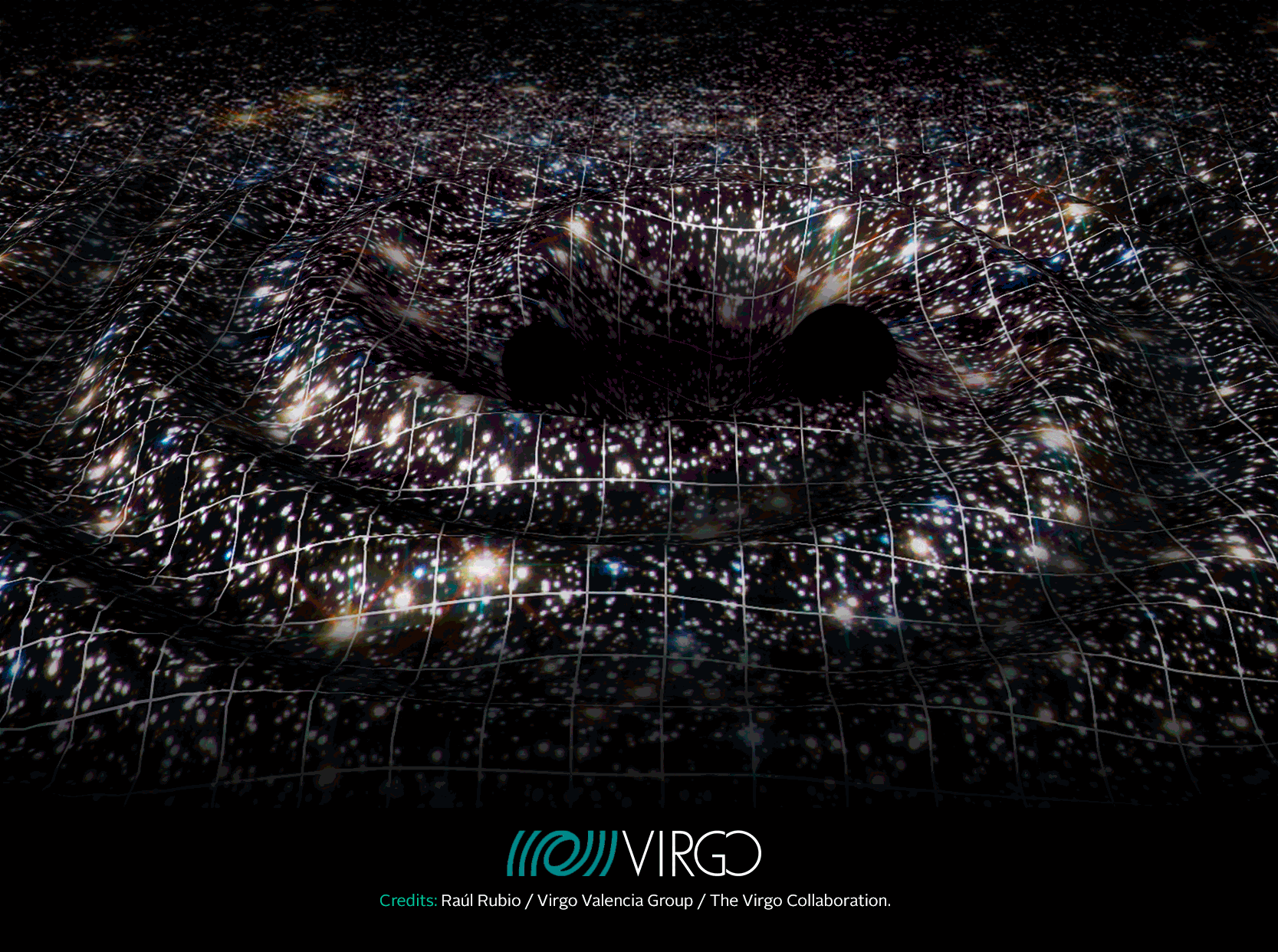The Valencia Virgo Group
Virgo Scientific Collaboration

The Valencia Virgo Group is a research group at the University of Valencia (Spain) participating in the gravitational wave detector Virgo. The Virgo laser interferometer, located in Cascina (close to Pisa, Italy), together with the two LIGO detectors form a gravitational wave detector network that is operated jointly by the LIGO-Virgo Collaboration.
The Valencia Virgo group joined the Virgo Collaboration in July 2016 and is composed by researchers from two different departments of the University of Valencia, the Departamento de Astronomía y Astrofísica and the Departamento de Matemáticas.
Recent News
THE BIRTH OF THE EINSTEIN TELESCOPE COLLABORATION

The XII symposium of the Einstein Telescope (ET) took place in Budapest, at the Hungarian Academy of Sciences, on the 7th - 8th of June. The Einstein Telescope (ET) is a proposed underground infrastructure to host a third-generation, gravitational-wave observatory. The goal is to improve the sensitivity of current detectors (aVirgo, aLIGO, KAGRA), by one order of magnitude, increasing the arm length of the interferometers from the current 3 km in aVirgo to 10 km, and implementing a series of new technologies for noise mitigation, such as a cryogenic system to cool down the main optical components to 10-20K.[More information]
Primeras observaciones de pares “combinados” de agujero negro y estrella de neutrones

Las colaboraciones científicas Virgo, LIGO y KAGRA anunciaron hoy la primera observación nunca vista de sistemas binarios formados por una estrella de neutrones (EN) y un agujero negro (AN). Esto ha sido posible gracias a la detección, en enero de 2020, de señales gravitatorias (apodadas GW200105 y GW200115 por las fechas de sus detecciones) emitidas por dos sistemas, en los cuales un agujero negro y una estrella de neutrones, girando uno alrededor de la otra, se fusionaron en un único objeto compacto. La existencia de estos sistemas fue predicha por la comunidad astronómica hace varias décadas, pero nunca habían sido observadas con seguridad, ya fuese por señales electromagnéticas o gravitatorias, hasta ahora. El resultado y sus implicaciones astrofísicas han sido publicadas hoy en The Astrophysical Journal Letters.[More information]
Virgo y LIGO revelan nuevas e inesperadas poblaciones de agujeros negros (2/09/2020)

Virgo y LIGO han anunciado la detección de un sistema binario extraordinariamente masivo fusionándose: dos agujeros negros de 66 y 85 masas solares, que generaron un agujero negro final de alrededor 142 masas solares. Tanto los agujeros negros iniciales, como el remanente, se sitúan en un rango de masas que no ha sido observado nunca antes, ni a través de ondas gravitacionales ni con observaciones electromagnéticas.
El agujero negro final es el más masivo jamás detectado con ondas gravitacionales. [More information]
Información adicional:
La noticia en los medios de comunicación:
- Los científicos captan una enorme onda gravitacional que no debería existir (El Pais, 02/09/2020)
- La mayor fuente de ondas gravitacionales nunca vista muestra la formación de un nuevo tipo de agujero negro (El Mundo, 02/09/2020)
- VÍDEO | Detecten la font d'ones gravitacionals més gran fins a la data (À Punt, 02/09/2020)
- Descubren la onda gravitacional más grande hasta la fecha (Levante, 02/09/2020)
- Detectan la fuente de ondas gravitacionales más grande hasta la fecha (Las Provincias (02/09/2020)
- Así es el agujero negro "imposible" que trae de cabeza a la ciencia (20 minutos, 03/09/2020)
More news ...
